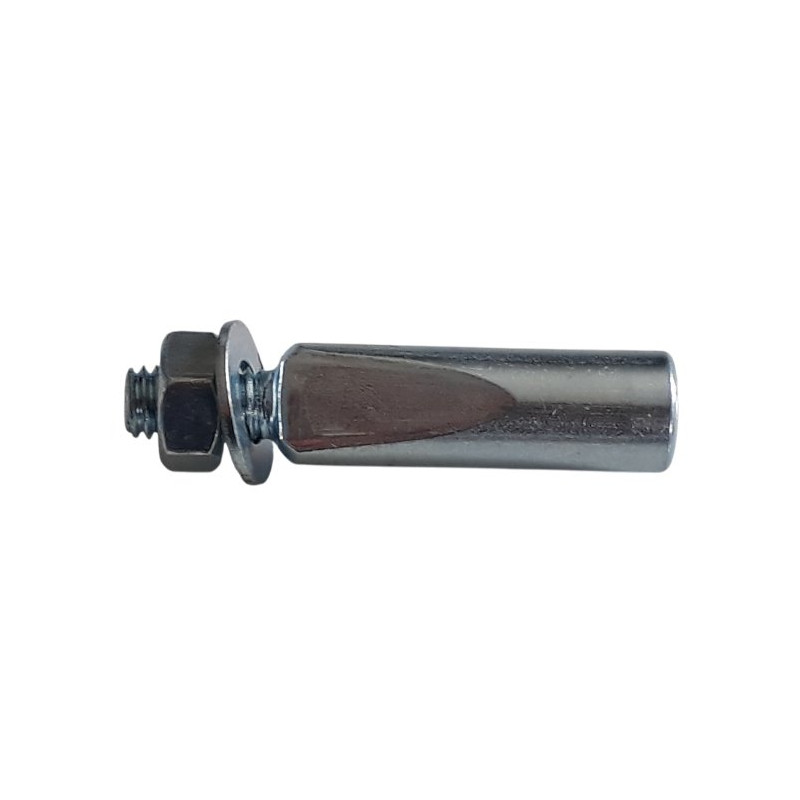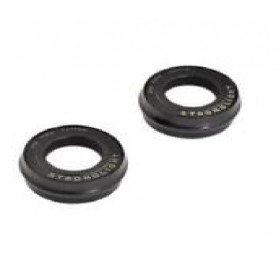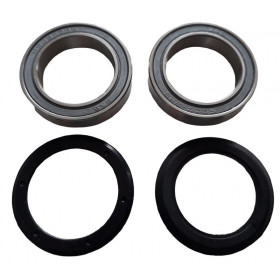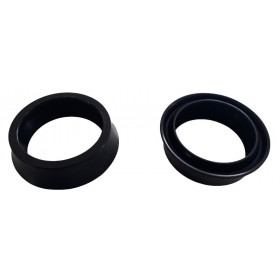 zoom_in
zoom_in
Crankset key diameter 9.5 mm length 42 mm
- 12 Items
- New
€1.47 VAT included €1.99
Bike cotter pin: the small yet crucial piece of a classic drivetrain
In the world of cycling, some components may seem minor but are essential to the smooth operation of a bike’s drivetrain. The bike cotter pin is one such part. Though largely replaced by modern technologies like cartridge bottom brackets, the cotter pin remains vital when restoring vintage bicycles or understanding the evolution of crankset systems.
What is a bike cotter pin ?
A cotter pin is a small steel component shaped like a flattened pin, used to lock the crank arm onto the bottom bracket axle. It is typical of older bicycles, especially those manufactured before the 1980s. These systems are known as cottered cranksets, known for their simplicity and reliability.
What does the cotter pin do in a bike drivetrain?
In a cottered crankset, the bottom bracket spindle has two conical holes through which the cotter pins are inserted. They are then secured with nuts. Once tightened, they ensure a mechanical link between the crank arms and the spindle, transferring the rider’s pedaling force to the chain and then to the rear wheel. The cotter pin thus plays a key role in locking and power transfer in the pedaling motion.
Features of a bike cotter pin
Here are the main characteristics of a typical cotter pin:
-
Material: usually made of hardened steel to withstand mechanical stress.
-
Shape: cylindrical rod with one flat (angled) side, forming a conical wedge.
-
Length: varies depending on the crankset model (often between 35 mm and 45 mm).
-
Diameter: most commonly 9 mm, though 8.5 mm and 9.5 mm sizes also exist.
-
Bevel angle: the slope of the flat side varies by manufacturer, which means cotter pins are not always interchangeable.
Specifics and mounting tips
Installing a cotter pin requires a bit of care:
-
Make sure to align the crank arms perfectly 180° opposite each other before securing.
-
A light grease on the pin is recommended to prevent seizing.
-
Final installation is usually done using a rubber mallet or a cotter pin press, followed by tightening the nut.
Removing a cotter pin can be tricky, especially if it’s rusted or worn. Special cotter pin extractors are available to avoid damaging the crank arms or spindle.
Why use a Cotter pin today ?
Even though modern cranksets use more advanced systems (square taper, Octalink, Hollowtech, etc.), cotter pins remain important for the maintenance and restoration of vintage bikes. They are part of the mechanical heritage of cycling, and vintage bike enthusiasts consider them a symbol of authenticity.
Conclusion
The bike cotter pin is more than just a small piece of metal—it’s a central element of traditional crankset mechanisms, essential for efficient power transmission from rider to chain. Known for its robustness and simplicity, it still has its place among classic bicycle restorers and fans of vintage bike mechanics. Whether you're restoring an old Peugeot or a Motobécane, the cotter pin is a part you’ll want to know—and handle with care.




